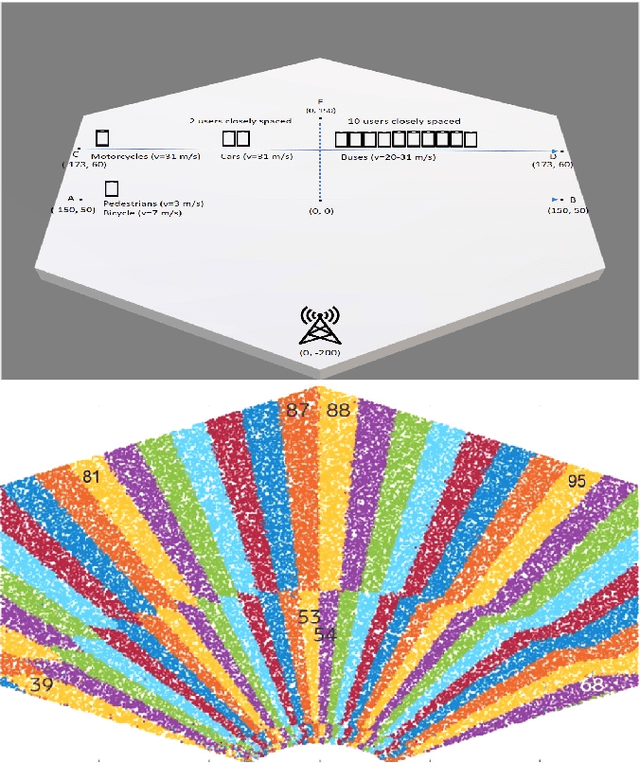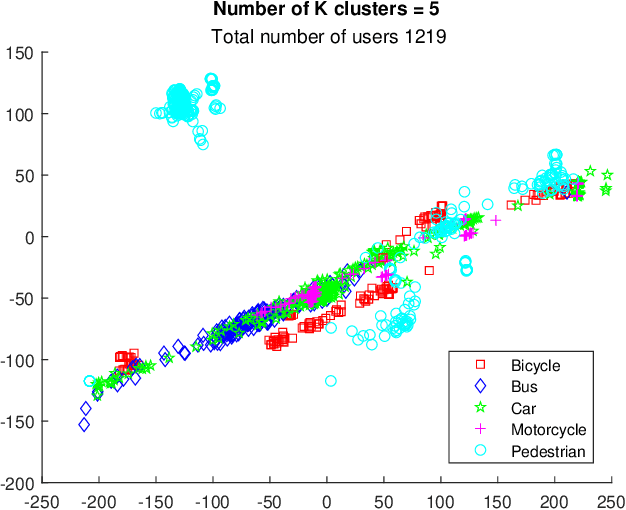Dino Pjanić
Early-Scheduled Handover Preparation in 5G NR Millimeter-Wave Systems
Nov 14, 2024Abstract:The handover (HO) procedure is one of the most critical functions in a cellular network driven by measurements of the user channel of the serving and neighboring cells. The success rate of the entire HO procedure is significantly affected by the preparation stage. As massive Multiple-Input Multiple-Output (MIMO) systems with large antenna arrays allow resolving finer details of channel behavior, we investigate how machine learning can be applied to time series data of beam measurements in the Fifth Generation (5G) New Radio (NR) system to improve the HO procedure. This paper introduces the Early-Scheduled Handover Preparation scheme designed to enhance the robustness and efficiency of the HO procedure, particularly in scenarios involving high mobility and dense small cell deployments. Early-Scheduled Handover Preparation focuses on optimizing the timing of the HO preparation phase by leveraging machine learning techniques to predict the earliest possible trigger points for HO events. We identify a new early trigger for HO preparation and demonstrate how it can beneficially reduce the required time for HO execution reducing channel quality degradation. These insights enable a new HO preparation scheme that offers a novel, user-aware, and proactive HO decision making in MIMO scenarios incorporating mobility.
Attention-aided Outdoor Localization in Commercial 5G NR Systems
May 15, 2024Abstract:The integration of high-precision cellular localization and machine learning (ML) is considered a cornerstone technique in future cellular navigation systems, offering unparalleled accuracy and functionality. This study focuses on localization based on uplink channel measurements in a fifth-generation (5G) new radio (NR) system. An attention-aided ML-based single-snapshot localization pipeline is presented, which consists of several cascaded blocks, namely a signal processing block, an attention-aided block, and an uncertainty estimation block. Specifically, the signal processing block generates an impulse response beam matrix for all beams. The attention-aided block trains on the channel impulse responses using an attention-aided network, which captures the correlation between impulse responses for different beams. The uncertainty estimation block predicts the probability density function of the UE position, thereby also indicating the confidence level of the localization result. Two representative uncertainty estimation techniques, the negative log-likelihood and the regression-by-classification techniques, are applied and compared. Furthermore, for dynamic measurements with multiple snapshots available, we combine the proposed pipeline with a Kalman filter to enhance localization accuracy. To evaluate our approach, we extract channel impulse responses for different beams from a commercial base station. The outdoor measurement campaign covers Line-of-Sight (LoS), Non-Line-of-Sight (NLoS), and a mix of LoS and NLoS scenarios. The results show that sub-meter localization accuracy can be achieved.
ML-Enabled Outdoor User Positioning in 5G NR Systems via Uplink SRS Channel Estimates
Apr 12, 2023Abstract:Cellular user positioning is a promising service provided by Fifth Generation New Radio (5G NR) networks. Besides, Machine Learning (ML) techniques are foreseen to become an integrated part of 5G NR systems improving radio performance and reducing complexity. In this paper, we investigate ML techniques for positioning using 5G NR fingerprints consisting of uplink channel estimates from the physical layer channel. We show that it is possible to use Sounding Reference Signals (SRS) channel fingerprints to provide sufficient data to infer user position. Furthermore, we show that small fully-connected moderately Deep Neural Networks, even when applied to very sparse SRS data, can achieve successful outdoor user positioning with meter-level accuracy in a commercial 5G environment.
Learning-Based UE Classification in Millimeter-Wave Cellular Systems With Mobility
Sep 13, 2021



Abstract:Millimeter-wave cellular communication requires beamforming procedures that enable alignment of the transmitter and receiver beams as the user equipment (UE) moves. For efficient beam tracking it is advantageous to classify users according to their traffic and mobility patterns. Research to date has demonstrated efficient ways of machine learning based UE classification. Although different machine learning approaches have shown success, most of them are based on physical layer attributes of the received signal. This, however, imposes additional complexity and requires access to those lower layer signals. In this paper, we show that traditional supervised and even unsupervised machine learning methods can successfully be applied on higher layer channel measurement reports in order to perform UE classification, thereby reducing the complexity of the classification process.
 Add to Chrome
Add to Chrome Add to Firefox
Add to Firefox Add to Edge
Add to Edge